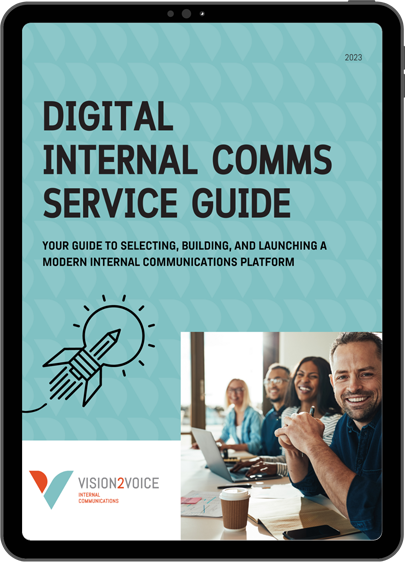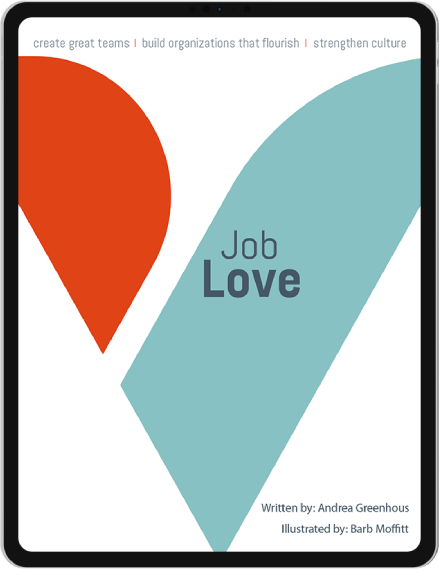Writer’s note: As Brené Brown would say, this blog kicked my ass. I worried that I couldn’t do such an important topic justice and I kept moving the blog forward in our production schedule. On Labour Day weekend as the pressure mounted to wrap up our series on the future of work I finally felt brave enough to start writing. Here goes…
Humans are social beings. We are neurologically and biologically wired for connection because it’s critical to our health — and to our very survival. We need each other to do great things and we need to be connected and supported by others. Even the most introverted people need connection and support. The reality is that loneliness and isolation in organizations were a huge problem before COVID-19 sent many of us home to work from our kitchen tables. But now, with many organizations considering remote and hybrid work in the future, the need for organizations to focus on connection as part of the employee experience has created a new urgency.
Why Connection Matters
Connection matters because it is essential to our health and wellbeing – one aspect of the employee experience that leaders are increasingly concerned about. Scientists have proven that there’s a link between isolation and health outcomes with studies showing a link between loneliness and reduced immunity and even a shorter life expectancy (one study showed that loneliness can be just as bad as smoking 15 cigarettes a day). Suffering from a lack of connection can also lead to depression and anxiety. The toll on mental health brought about by the stress and isolation of the pandemic is unfortunate proof of this correlation.
It turns out, connection is also critical to helping people learn, grow, and thrive in the workplace. Social connection and interaction are essential to effective teamwork and the ability to work together effectively. Research by the Telfer School of Management at the University of Ottawa also showed that strong connections at work help to equip people with advice, knowledge, mentorship, and professional and emotional support. These in turn help employees learn, grow, solve problems, and navigate change.
A Problem that Needs Urgent Attention
The need for organizations to foster connection has never been more urgent. Prior to the pandemic, loneliness and a lack of connection was a significant problem. A 2019 study found that 40% of respondents felt isolated at work.
It doesn’t take a rocket scientist to figure out that these numbers are higher than ever or that a future that includes remote and hybrid work has increased the importance of fostering connection at work.
But how do leaders and internal communications professionals nurture connection and battle loneliness and isolation? Isn’t organizing monthly Zoom happy hours enough? The unequivocal answer to this is no. In fact, I’ve come up with five powerful ways to foster connection in organizations. These will work in any organization.
-
Use storytelling to create shared meaning and purpose
The Tokyo Olympics reminded me of an initiative I spearheaded early on in my career. It’s a story that highlights how meaningful internal communication and the power of purpose can connect people across an organization.
Just before the Olympics, one of the rowers on Team Canada fell ill with a serious disease. Andrea knew that the treatment for the disease would include ingredients from the company she worked for. Fast forward a few months later and the rower had recovered and was on her way to the Olympics but not before she stopped to thank the employees for their role in her treatment.
The rower’s talk at the company town hall was a moving experience and helped connect employees to the company’s purpose. All employees were united in following the rower through her Olympic career and were overjoyed when she returned to meet with them again — this time with several medals.
This is a wonderful example of how storytelling can create shared meaning while connecting your employees to your organization’s purpose. What are the stories you can tell to build shared meaning across your organization?
-
Tell People Stories
People stories are usually some of the most popular content in organizations but there are two ways of making these even better – and more valuable. First, don’t forget to highlight a more personal side – hobbies, family life, personal challenges are all ways of building connection. As a dog lover, I automatically feel a connection to another dog lover, and I know that my introverted self will have something to talk about when we meet (online or in-person).
The best people stories include advice and knowledge. The strategy here is to not only connect people but to help employees learn from others. It’s a subtle shift with a big payoff.
-
Rethink the role of the offices
Many organizations are choosing hybrid policies over 100% remote and one of the biggest reasons for this decision is that they don’t want to lose the power of the chance encounters or the energy that is created when there are people working shoulder to shoulder. Yet, we all know that the office can be a lonely place and so asking people to come into the office 2 days a week isn’t the answer. What’s required is communication that defines a new role for the office.
We are helping our clients define and clarify the role of the office. This is something too important to be left to chance or interpretation but rather requires intentional communication that supports a shift in mindsets and behaviours around the role of the office.
Even if your company is 100% remote or you have front-line workers that don’t normally get the chance to be physically together, is there a way of creating a ritual or gathering that can promote connection? Can you be intentional about bringing people together in some way? Once you’ve decided, remember to ensure expectations are clearly communicated.
-
Make it part of your culture
Like any aspect of culture, a culture of connection starts with the words and actions of leaders. Those Zoom happy hours are not going to make a difference if people are exhausted and stressed because of their workweek and if employees feel they’ve had no time for themselves or their families. Similarly, building an emotional support network won’t happen if talking about stress, change and anxiety are taboo. When leaders signal that social connection is important by communicating with words and action – the shift will begin.
Another critical element of nurturing a culture of connection is to clearly define what you mean and what you are trying to achieve. Otherwise, it’s just talk. Then, dig into the topic so to develop clarity and a shared understanding of the mindsets and behaviours that will support the change. Ask, what are the stories we are telling ourselves about connection in our organization and if it’s not supporting why we are trying to achieve, how do we change it?
-
Create psychological safety
You can’t build authentic connections in organizations if everyone is constantly walking on eggshells. That’s why strong, human connections will only happen in organizations with high levels of psychological safety. These are organizations that value the voices of all employees, where there is a willingness to support each other, and a belief that making a mistake will not be career limiting.
This all sounds great but building psychological safety requires conscious effort and specific strategies. I’ve been trained to help teams learn how to create more psychological safety and we start by creating a safe place that allows for deep listening. Respect, trust, the ability to be yourself, and listening are conditions necessary for creating deep connections. After all, if you think of your greatest friendships, chances are there is the presence of open conversation based on intentional and empathetic listening.
As we emerge from the pandemic and reimagine work, creating an employee experience rooted in connection must be a priority. We hope we’ve helped you understand the importance of doing this work and have provided a starting point with some of the strategies we use with clients. If you are doing this work, we’d love to hear from you!






